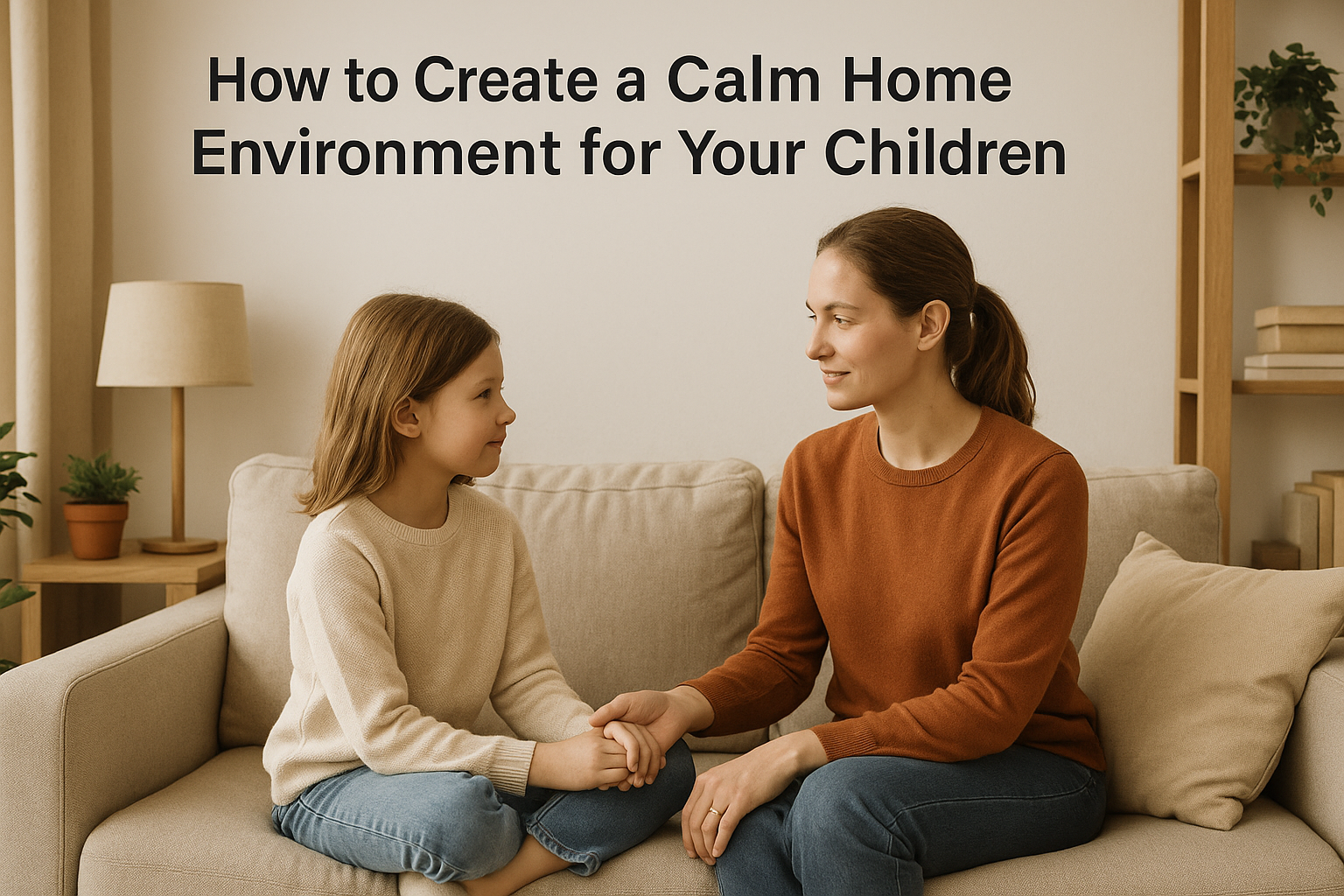Children absorb the energy of their environment. When your home feels calm, organized, and emotionally safe, your child is more likely to feel relaxed, focused, and secure. But in the rush of daily life—between work, school, chores, and screen time—it’s easy for the home to become chaotic or overstimulating.
Creating a peaceful environment doesn’t mean everything has to be perfect or silent. It means building routines, spaces, and relationships that support emotional balance, mutual respect, and connection.
Here’s how to create a calmer home that helps your child feel safe, centered, and supported.
Understand the Impact of the Home Environment
Children are deeply sensitive to the atmosphere around them. A home that feels constantly rushed, noisy, disorganized, or emotionally tense can increase stress, anxiety, and behavioral issues.
On the other hand, a calm home:
- Encourages emotional regulation
- Improves focus and sleep
- Builds stronger family bonds
- Helps children feel safe and grounded
- Teaches respectful communication by example
The goal is not to eliminate all noise or movement—it’s to reduce chronic chaos and increase intentional calm.
Create Predictable Routines
Routine brings a sense of stability and trust. Children feel more secure when they know what comes next.
Start with the basics:
- Morning routine: Wake-up, breakfast, getting dressed
- After school: Snack, homework, free play
- Evening: Dinner, bath, storytime, bed
You don’t have to schedule every minute. Even a loose rhythm gives your child a sense of control in a busy world.
Make visual charts for younger children to follow along, and involve them in planning routines as they grow.
Designate Quiet Spaces
Having a calm environment also means having calm spaces. These don’t need to be big or fancy—just areas where your child can rest, read, or reset without overstimulation.
Ideas include:
- A reading corner with cushions and soft lighting
- A “calm-down” space with sensory toys or books
- A small desk or table for quiet activities like drawing or puzzles
Encourage your child to use these spaces when they feel overwhelmed or need a break.
Reduce Clutter and Noise
Clutter can be visually and mentally overstimulating for children. It’s harder to relax, focus, or play creatively when every surface is covered in stuff.
Make decluttering a family activity:
- Keep only toys your child actively plays with
- Store toys in bins or baskets for easy cleanup
- Create simple, labeled storage systems your child can use independently
Lower background noise when possible. Turn off the TV when no one is watching. Limit overlapping sounds (like music and video games at the same time). Soft background music can be calming—but constant loud noise is not.
Use Gentle Lighting
Lighting affects mood and energy. Bright, harsh lights can create a stressful atmosphere—especially in the evening.
Try:
- Natural light during the day
- Warm lamps instead of overhead lighting
- Night lights in bedrooms
- Dimming lights an hour before bedtime to signal winding down
Lighting helps set the tone for calmness throughout the home.
Prioritize Connection Over Perfection
A peaceful home is not about clean floors or quiet voices—it’s about how people treat each other inside that space.
Choose connection:
- Make time for one-on-one chats with your child
- Sit down for meals together when possible
- Laugh together—silliness can ease tension
- Give hugs, high-fives, or back rubs
- Apologize when you make a mistake
The emotional climate matters more than physical appearance. Your child will remember how your home felt, not how it looked.
Set the Emotional Tone as a Parent
Children regulate their emotions based on yours. If you’re constantly rushed, reactive, or overwhelmed, your child will mirror that energy.
You don’t need to be perfectly calm all the time. But when you can stay grounded, you teach your child that emotions can be managed without yelling, blaming, or chaos.
Practice calming strategies yourself:
- Take deep breaths when feeling frustrated
- Pause before reacting
- Use a calm, firm tone when setting limits
- Make time for your own self-care—even if it’s 10 minutes a day
When your child sees you handle stress with intention, they learn to do the same.
Limit Screen Time and Overstimulation
Too much screen time can lead to irritability, sleep issues, and a sense of disconnection. Create screen-free times and zones in your home to encourage a calmer rhythm.
Some families set boundaries like:
- No screens at the dinner table
- One hour of screen time after school
- Screen-free Sundays
- No devices in bedrooms overnight
Use screen-free times for activities that support calmness, like puzzles, crafts, storytelling, nature walks, or just quiet play.
Use Calming Language
The way we speak shapes the emotional environment of the home. Try to use words that soothe rather than escalate.
Examples:
- Instead of “Stop yelling!”, say “Let’s use a quieter voice.”
- Instead of “You’re being bad,” say “I see you’re having a hard time. Let’s take a break.”
- Instead of “Hurry up!”, say “We’re almost out of time. Let’s work together.”
Tone matters. Even when correcting behavior, a calm voice helps de-escalate tension.
Build in Time for Rest and Play
A calm home isn’t just about being quiet—it’s about balance. Make sure your family has time to slow down and simply be.
Encourage:
- Unstructured playtime
- Outdoor time whenever possible
- Naps or rest breaks for younger children
- “Do-nothing” time—no pressure to be productive
Busyness doesn’t equal success. A peaceful home gives your child the freedom to grow at their own pace.
A Calm Home is a Powerful Gift
You don’t need a bigger house, fancy toys, or expensive routines to create a peaceful home. You need presence, intentionality, and emotional safety.
By creating predictable rhythms, reducing overstimulation, and leading with compassion, you’re building a home where your child feels grounded—even when life outside gets noisy.
And that calm foundation will stay with them, wherever they go.
